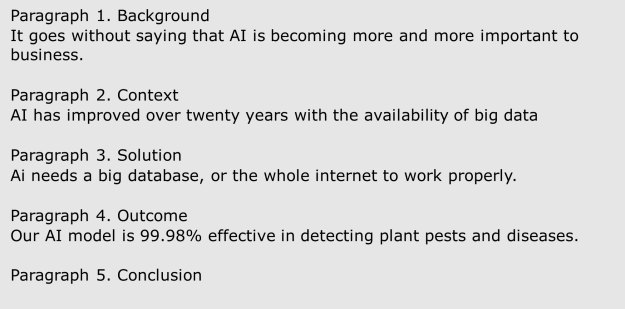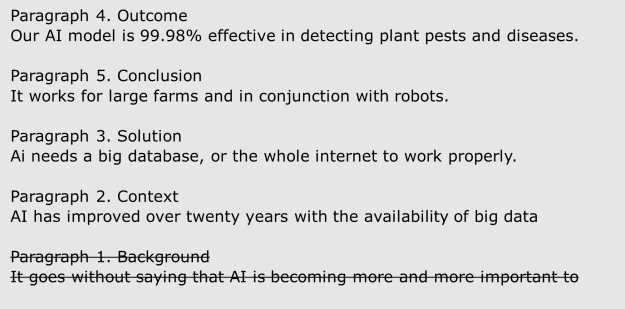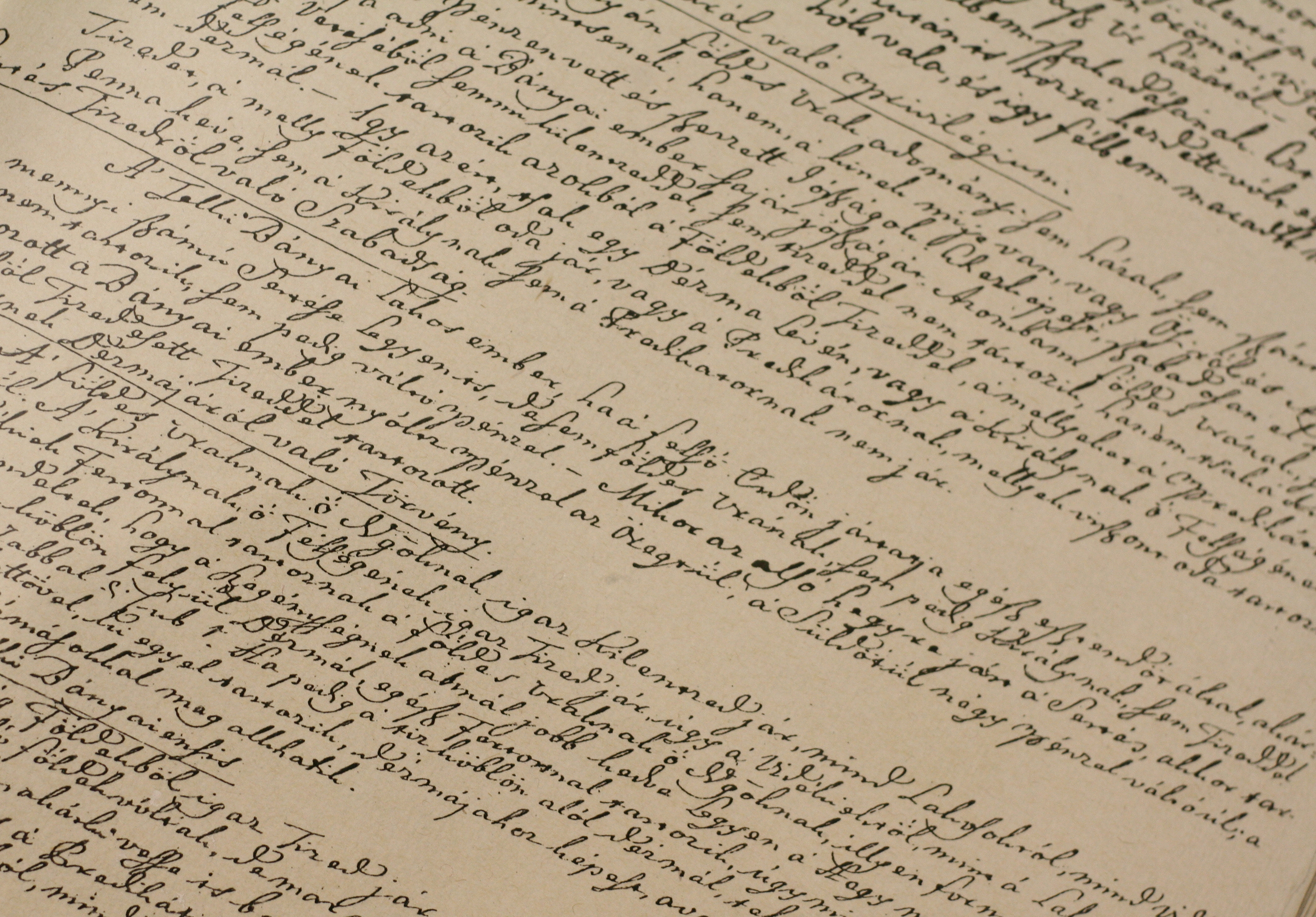TL;DR I Need Help Right Now!
Think about your readers
As real people, maybe sat around a pub table. What would you say to them to make them put their pint down in amazement? Your document has a most important point, we call this the best bit, journalists call it the lede. Write it down in the words you’d use in the pub. You can smarten it up later.
Structure your document
Write down a few key ideas; things you know you want to say. Position these as if they are the first lines of your paragraphs (or slides maybe).
Order the sentences so you start with your best bit. This is the important question, decision or findings. It’s the thing your reader really wants to know.
Do NOT begin with the background. The temptation is to have first sentences like this:

Yawn!
Check back to point 1. and put your best bit first. Like this:

Better. And you can ditch the first line, Paragraph 1.
Tell your story
Having held back this far, now you can bring your detailed, long sentence game. Fill in your paragraphs or slides with proper proof. Not just opinion (although that’s important), but options, examples and stats. Add infographics and graphs.
Read the first sentence of each paragraph aloud.
If it doesn’t flow, rearrange the order and/or rewrite them until they do flow, or at least sound less jerky. Check you haven’t buried the important point later in the paragraph. Fish it out, like a stray crisp from the packet, and put it at the beginning.
Edit to sound expert
Shorten your waffly sentences.
It’s no good writing five key sentences that are 45 words long. Have a metaphorical sip of your pint and give people space to take it all in. You can do this with full stops and shorter sentences. Sharpen your first sentences to 15-20 words tops.
Add headings, subheadings, bullet points.
• Don’t assume everyone is going to read your document from beginning to end in one sitting (especially if it’s long).
• Give your readers confidence in your writing with consistent headings.
• Ask yourself; what might the reader need to remind them where they are in each section? Think about how you repeat questions, principles, options.
Explain your terms.
You want someone who’s just picked up your paper after a meeting to quickly understand what you’re talking about. Make their life easier by spelling it out. A two letter acronym is an indulgence. Write it out.
Read the whole piece out loud.
This will help you pick up typos, confusing sections, long sentences (do you run out of breath?). Better still, have someone else read it out loud.
Was that enough?
There's more in our blogs on writing for business: Blogging for Techies and Writing for a Decision.
If you need more, we'll devise a session or two for your team. Using their own documents, we’ll show them how to:
• Think about the reader
• Order their thoughts
• Work out the story (and best bit)
• Use proof effectively
• Edit to sound like the experts they are
Drop Kate a line and let’s tell your best story.


